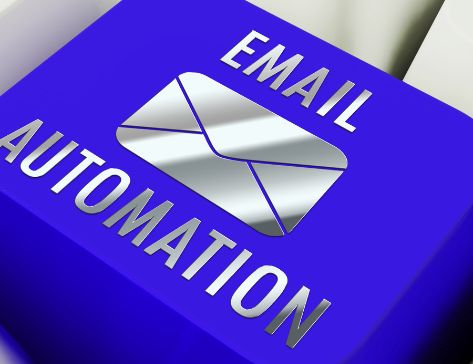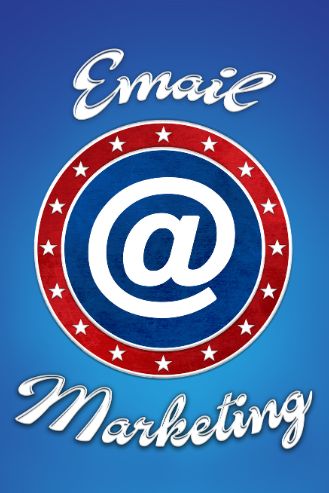
Marketing Automation Evolution: From Basic Email Tools to AI-Powered Platforms
Marketing automation evolution has fundamentally transformed how businesses engage with customers, streamline operations, and drive growth over the past two decades. From its humble beginnings as simple email autoresponders to today’s sophisticated AI-powered platforms, marketing automation technology has continuously adapted to meet the changing needs of marketers and the rising expectations of consumers. This evolution represents one of the most significant shifts in marketing practice, enabling personalization at scale and data-driven decision-making that was previously impossible.

The Genesis of Marketing Automation (1990s-2000s)
The journey of marketing automation began in the late 1990s with the emergence of email marketing tools that allowed businesses to send mass communications to customer lists. These early solutions offered basic functionality: the ability to schedule email campaigns and track open rates. The real breakthrough came in the early 2000s when platforms began incorporating behavioral triggers, allowing marketers to send automated responses based on specific customer actions.
This period saw the founding of pioneering companies like Eloqua (1999), which introduced the concept of lead nurturing through automated email sequences. By 2006, when Marketo entered the market, the focus had shifted toward lead scoring and qualification, helping sales teams prioritize their efforts based on prospect engagement. These developments marked the transition from simple email tools to more comprehensive marketing solutions.
First email marketing software emerges
Eloqua founded, introducing B2B marketing automation
Marketo launches, focusing on lead management
HubSpot introduces inbound marketing methodology
The Expansion Era: Multi-Channel Capabilities (2010-2015)
Integration Across Marketing Channels
As digital marketing expanded beyond email, marketing automation platforms evolved to incorporate multiple channels. This period saw the integration of:
- Social media management and monitoring
- Landing page and form builders
- SMS and mobile messaging
- Web personalization capabilities
- Basic CRM functionality
Content Marketing Revolution
The rise of content marketing during this period significantly influenced automation development. Platforms began offering:
- Content management systems
- Blog publishing tools
- SEO recommendations
- Content performance analytics
Advanced Analytics and Reporting
Data capabilities expanded dramatically, with platforms providing:
- Campaign attribution modeling
- Conversion path analysis
- ROI calculation
- Custom reporting dashboards
This era was characterized by significant market consolidation as larger companies recognized the strategic value of marketing automation. Salesforce acquired ExactTarget for $2.5 billion in 2013, while Oracle purchased Eloqua for $871 million in 2012, signaling the technology’s growing importance in the enterprise software ecosystem.
The Personalization Revolution (2015-2020)
Behavioral Targeting and Dynamic Content
As consumer expectations for relevant experiences grew, marketing automation platforms developed sophisticated personalization capabilities:
- Behavioral segmentation based on website interactions
- Dynamic content insertion in emails and web pages
- Predictive content recommendations
- Personalized product recommendations
- Advanced retargeting capabilities across channels
Customer Journey Orchestration
Focus shifted from campaign management to holistic customer journey orchestration:
- Visual journey builders with drag-and-drop interfaces
- Cross-channel journey mapping
- Trigger-based automation workflows
- Real-time interaction management
Account-Based Marketing Integration
B2B marketing automation platforms embraced account-based marketing approaches:
- Account identification and scoring
- Multi-contact nurturing within accounts
- Account-level engagement metrics
- Sales and marketing alignment tools
Implementation Tip: Balancing Automation and Personalization
When implementing marketing automation, start with clear customer journey mapping. Identify key touchpoints where personalization adds value, then build automation workflows around these moments. Remember that automation should enhance the human element of marketing, not replace it.
The AI-Powered Transformation (2020-Present)
Artificial Intelligence and Machine Learning Integration
The current era of marketing automation is defined by AI capabilities that enable:
- Predictive lead scoring and customer lifetime value forecasting
- Natural language generation for content creation
- Automated A/B testing and optimization
- Intelligent send-time optimization
- Machine learning-based customer segmentation
- Conversational marketing through chatbots and virtual assistants
Customer Data Platforms and Unified Data
Data management has become central to modern marketing automation:
- Customer data platforms (CDPs) for unified customer profiles
- Real-time data processing capabilities
- Identity resolution across devices and channels
- Privacy compliance and consent management
Omnichannel Orchestration
Today’s platforms enable true omnichannel marketing:
- Consistent experiences across all customer touchpoints
- Real-time channel switching based on customer behavior
- Integrated online and offline engagement
- Voice and IoT device integration
Implementing Modern Marketing Automation: A Strategic Framework
For organizations looking to leverage the latest marketing automation capabilities, here’s a structured approach:
Step 1: Audit and Assessment
- Evaluate current marketing processes and identify automation opportunities
- Assess data quality and availability
- Review existing technology stack and integration requirements
- Define clear objectives and success metrics
Step 2: Strategy Development
- Map customer journeys across all touchpoints
- Define segmentation strategy and personalization approach
- Establish content requirements for automation workflows
- Create data governance framework
Step 3: Platform Selection
- Define technical and functional requirements
- Evaluate vendor capabilities against specific use cases
- Consider scalability, integration capabilities, and total cost of ownership
- Assess vendor support and implementation resources
Step 4: Implementation and Integration
- Develop phased implementation roadmap
- Integrate with existing systems (CRM, e-commerce, etc.)
- Establish data flows and synchronization processes
- Build and test initial automation workflows
Step 5: Optimization and Expansion
- Monitor performance against established KPIs
- Continuously test and refine automation workflows
- Gradually expand use cases and channel coverage
- Upskill team members on platform capabilities
Advanced Strategy: Progressive Profiling
Instead of collecting all customer data upfront, use marketing automation to gradually build customer profiles over time. Each interaction should capture small pieces of additional information, creating a comprehensive view without overwhelming the customer with lengthy forms.
Future Trends in Marketing Automation
Looking ahead, several emerging trends will shape the next phase of marketing automation evolution:
Hyper-Personalization at Scale
AI will enable personalization beyond segments to truly individual experiences:
- Real-time content generation tailored to individual preferences
- Predictive next-best-action recommendations
- Emotional intelligence in customer interactions
Autonomous Marketing
Systems will increasingly make decisions without human intervention:
- Self-optimizing campaigns that adjust in real-time
- Automated budget allocation across channels
- AI-driven creative optimization
Privacy-First Automation
As privacy regulations tighten, automation will adapt through:
- Zero-party data collection strategies
- Consent-based personalization frameworks
- Privacy-preserving analytics techniques
Immersive Experience Automation
New channels will be incorporated into automation strategies:
- Augmented and virtual reality experiences
- Voice-first interaction design
- Connected device orchestration
Conclusion: Embracing the Continuous Evolution
The evolution of marketing automation represents a journey from simple task automation to intelligent experience orchestration. Today’s platforms offer unprecedented capabilities to deliver personalized, relevant customer experiences at scale while providing marketers with the insights needed to continuously improve performance.
As we look to the future, the line between marketing automation and artificial intelligence will continue to blur, creating systems that not only execute predefined workflows but actively learn, adapt, and optimize based on real-time data. Organizations that embrace this evolution of marketing automation will gain significant competitive advantages through enhanced customer experiences, operational efficiency, and data-driven decision-making.
The most successful marketers will be those who view automation not simply as a technology implementation but as a strategic transformation that fundamentally changes how they understand and engage with customers. By combining human creativity and strategic thinking with the power of automated execution, tomorrow’s marketing leaders will achieve the perfect balance of personalization, efficiency, and innovation.


